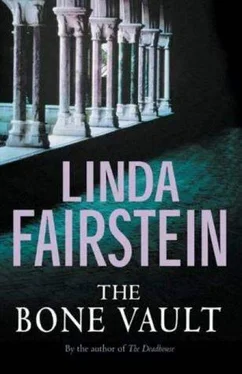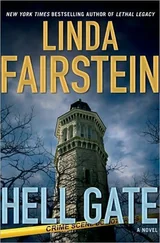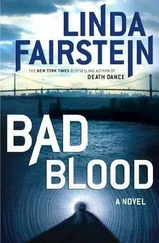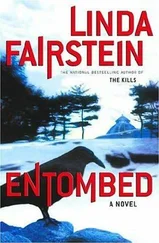“On what basis? We haven’t got a thing. Any sign that he’s not coming back?”
“Eve Drexler says it’s business as usual come Tuesday.”
“I’m more concerned about Pierre Thibodaux.”
“She’s boxing up his entire office now to send off with him. Wanther DNA? Betcha there’ll be tearstains all over his belongings. I think Eve would like to follow Pierre home to Paris.”
By the time we reached Dr. Kestenbaum’s office, he had arrived from the scene of the Chelsea stabbing and was changing out of his clothes into the scrubs he would wear in the autopsy room for the rest of the day.
“So what do you two know about poison?”
“Start at the top of the page, doc. We’re beginners.”
“Katrina Grooten died of arsenic poisoning. I’ve submitted all the tissue and hair samples for toxicology and mitochondrial DNA analysis, but those results take quite a while, as you know.”
“You were just guessing yesterday. But now you’re sure?”
“Some very gross indications, Alex. Mee’s lines on her fingernails were rather telltale, the minute I saw her hands.”
“What are they?”
“White lines running straight across her nails, suggesting toxic levels of arsenic in the body. That strong, pungent odor you smelled when the coffin lid was opened. Remember when I asked you if it reminded you of anything and you told me it was pungent? Garlic, I thought. The alopecia I observed, hair coming out of her scalp and her eyelids-all those things are consistent with high levels of arsenic intake. I’ll have the complete report typed up by the beginning of the week, but those were my initial observations before we even started to cut.”
“D’you ever see a body preserved like that, doc?”
“Never. Not naturally. Nothing was done surgically to keep it intact, I’ve confirmed that.”
“So we’ve gotta figure out whether the killer knew what he was doing when he hid the body, or whether it was an accident of the climate conditions where he hid it, right?”
“I’ll tell you this, Mike. When I get the tox results back, I think we’ll see that Ms. Grooten’s murderer did nothing to disguise the fact that she was overdosed with arsenic.”
“What do you mean?”
“That he didn’t expect her to be found for six months, if ever-”
“Or a year later, a continent away-”
“Even better for him. It’s not like he was giving it to Grooten in small, subtle doses. I think he was figuring she’d be long out of the way, undiscovered and decayed before anyone realized what had happened.”
“Isn’t arsenic in our drinking water?”
“It would take one thirsty broad to put out her lights this way, Coop. You gotta call my mother. She’ll be so proud of the way my education is paying off in this investigation. Day one, I come across an Incorruptible. Now I can add all the things I know Albertus Magnus-Saint Albert the Great-was good for. He was the first guy to produce arsenic in a free form. Right, doc?”
“Exactly. It’s been a popular way of poisoning people since the Middle Ages, in fact and in fiction. At one time it was such an available means of killing that the Brits referred to it as ‘inheritance powder.’ Best way to do in the family member who controlled the purse strings.
“And yes, Alex, arsenic is introduced into drinking water through the dissolution of minerals and ores on the earth’s surface. Sometimes aggravated by industrial waste. It’s in a lot of the fish and meat you eat. But if Grooten was exposed to a supply of contaminated water, where she worked or where she lived, she wouldn’t be the only one getting sick. The whole neighborhood would have been in bad shape after a while.”
“What are you figuring, blondie? She drank too much tap water, fell into a limestone box and the lid dropped on it?”
“You know Battaglia’s going to ask me if there’s any chance her death could have been accidental. I’m just trying to rule out the obvious.”
“Of course there have been accidental poisonings. We had a case last year where a guy who did professional woodworking breathed in the fumes from some chemically treated lumber. Absorbed the stuff through his mucous membranes because he was just too stubborn to use a mask on wood that had been coated with an arsenic compound. You can inhale it, absorb it, and ingest it. None of those methods are recommended.”
“Does it manifest any symptoms over time?”
“Sure. If it were just a mild poisoning, I’d expect the patient to complain of nausea, chills, loss of appetite, intestinal upset, apathy. Small doses would make you sick, but they wouldn’t necessarily kill you. The more acute cases begin to show skin lesions, chronic headaches, the metallic taste which results in that garliclike odor, the liver damage apparent here at autopsy.”
“Can you give me any idea how long this was going on, doc?”
“The hair sample should be a big help with that. It will give us a poisoning time line.”
“How so?”
“Figure that the average growth rate for human hair is one and a half centimeters a month. Every millimeter sample represents about two days’ growth. I’d expect to be able to tell when Grooten was exposed to her first significant dose of arsenic once we get that result. And from the looks of things today, we’ll probably find a much greater concentration-five or six times as much-in the hair closest to her scalp.”
“Did you find any trace evidence on the body or inside the coffin, anything that might link us to the guy who did this?”
“I’ve saved the linen binding. Has some age to it. Probably was taken off some other antiquity and wrapped around Grooten. So you’re likely to have some transfer material or residue from the first subject. More likely that than from the killer.”
“Prints?”
“I never thought of you as an optimist, Mike. The lab can look it over. I’d think whoever had this much time to deal with a corpse had latex gloves on. You don’t have to be a doctor. Every drug and hardware store sells them.”
“And where do you shop for arsenic?” I asked.
“It’s in insecticides like Paris green. It’s in poison gases. Have you confirmed that she had a connection at the Metropolitan Museum, like you thought yesterday?”
“Yeah.”
“Arsenic is a very common ingredient in pigments, Alex. Any art museum would have a surprisingly good supply of deadly poisons. Lye and white lead and arsenic make for brilliant colors but a lousy diet, and they’re likely to be in any serious artist’s stash of pigments.” Kestenbaum turned to Chapman. “I’ve bagged her clothes for you, Mike.”
He tossed us each a pair of latex gloves and pointed at a bunch of brown paper bags standing on the far end of the table at which we were seated.
I stood up and opened the first of them, removing a bra. It was old and worn thin, and the writing on the label had been bleached off after many washings. It was a small size. The second bag held the deceased’s panties. Like the bra, they were a dingy shade of off-white, from age and repeated cycles of laundering. The third bag contained a pair of women’s slacks, size 6, poorly made of a coarse plaid wool. They were worn around the bottom of the pant legs and had pilling all over the seat. The brand name was that of one of the cheap mailorder companies.
The fourth bag held a woman’s crewneck sweater.
“What’s so fascinating, Coop?”
“It doesn’t belong to the same shopper who bought the other pieces.”
“How come?”
“First of all, it’s cashmere. It’s also not her size.” I held the sweater up to examine it. It was much larger than the small-boned Grooten would have worn.
“Third, the label is one of the most expensive shops on Madison Avenue. Where’s your Polaroid?”
Читать дальше












